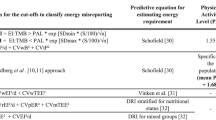Abstract
Objective: To study the reproducibility of a food frequency questionnaire used to assess past dietary habits.
Design: Repeated retrospective assessment of dietary habits of a population sample.
Setting: Uppsala-Örebro Health Care Region of Sweden.
Subjects: One-hundred and four subjects participating as control subjects in a case–control study on thyroid cancer.
Interventions: Between spring 1993 and spring 1994 a case–control study was conducted in the study area, in order to investigate risk factors for thyroid cancer—diet among others. The study subjects reported their consumption of selected foods with reference 1–5 y before, as well as dietary changes that occurred from adolescence to adult age. One year later 197 control persons were invited to provide a second report of the same food items. Of the invited subjects 104 agreed to participate.
Results: The median Spearman rank correlation coefficient between the first and second assessment was 0.58 for food consumption and 0.56 for nutrients intake. Correlation between the two assessments varied greatly between food items, ranging from −0.03 to 0.83. The correlation was positively related to the frequency and negatively related to the skewness of consumption. The recall of dietary changes from adolescence had a median correlation coefficient of 0.38 (range 0.19–0.69). There were hints of a higher reproducibility of dietary reports among men and among highly educated subjects (more than 11 y of education), but these differences were statistically significant only for recall of adolescent diet. Reproducibility of nutrients intake was also significantly higher among men than among women, as well as among subjects older than 45 y.
Conclusions: The reproducibility of dietary reports was satisfactory. Among factors affecting reproducibility, frequency and homogeneity of consumption in the source population are presumably the most important. Age, sex and education modify the inter-subject reproducibility of past diet. Based on reproducibility of a semi-quantitative index, the recall of adolescent diet probably has a low validity.
Sponsorships: The study was partially funded by the Swedish Cancer Society, grant no. 3136-B92-02XBB, the Swedish Society of Endocrinology and the Swedish Medical Research Council, grant no. 102.
European Journal of Clinical Nutrition (2000) 54, 658–664.
This is a preview of subscription content, access via your institution
Access options
Subscribe to this journal
Receive 12 print issues and online access
$259.00 per year
only $21.58 per issue
Buy this article
- Purchase on Springer Link
- Instant access to full article PDF
Prices may be subject to local taxes which are calculated during checkout
Similar content being viewed by others
Author information
Authors and Affiliations
Contributions
Guarantor: LM Hansson.
Contributors: LH conducted the statistical analysis and wrote the main body of the manuscript. RG was responsible for the design and data collection of the case–control study and of the reproducibility study. She contributed to the interpretation and discussion of the results in the present work. RB supervised the statistical analysis and contributed to the methodology and discussion chapter. He died on 24 June 1999. Before his death he had approved the final version of the manuscript. This study represents one of his last contributions in the field of nutritional epidemiology, of which he was an insightful analyst and outstanding educator.
Corresponding author
Rights and permissions
About this article
Cite this article
Hansson, L., Galanti, M. & Bergström, R. Factors affecting reproducibility of dietary reports using food frequency questionnaires. Eur J Clin Nutr 54, 658–664 (2000). https://doi.org/10.1038/sj.ejcn.1601070
Received:
Revised:
Accepted:
Published:
Issue Date:
DOI: https://doi.org/10.1038/sj.ejcn.1601070
Keywords
This article is cited by
Validity and reproducibility of the food frequency questionnaire used in the Shanghai Women's Health Study
European Journal of Clinical Nutrition (2004)



